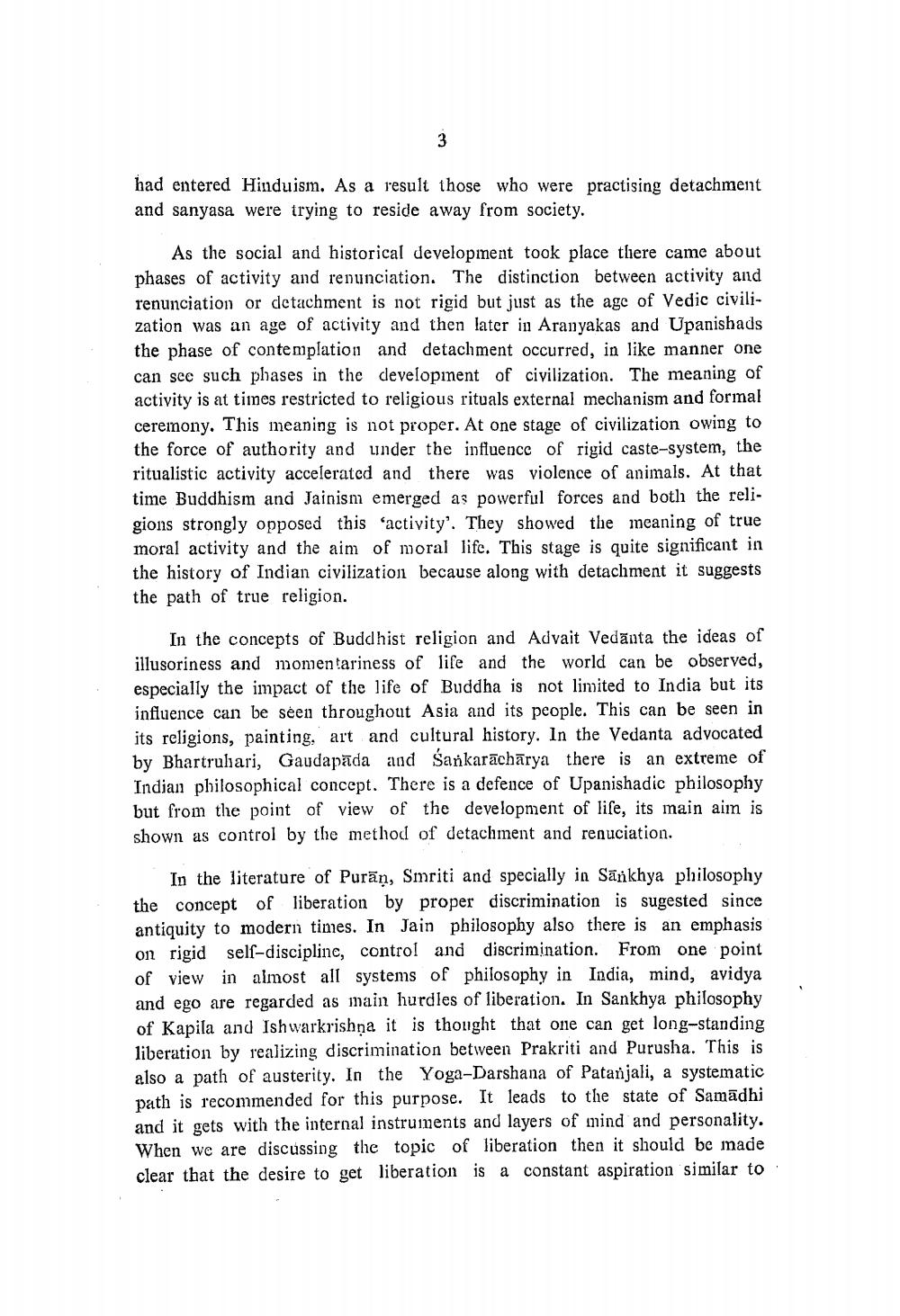Book Title: Sambodhi 1990 Vol 17 Author(s): H C Bhayani Publisher: L D Indology Ahmedabad View full book textPage 8
________________ had entered Hinduism. As a result those who were practising detachment and sanyasa were trying to reside away from society. As the social and historical development took place there came about phases of activity and renunciation. The distinction between activity and renunciation or detachment is not rigid but just as the age of Vedic civilization was an age of activity and then later in Aranyakas and Upanishads the phase of contemplation and detachment occurred, in like manner one can see such phases in the developinent of civilization. The meaning of activity is at times restricted to religious rituals external mechanism and formal ceremony. This meaning is not proper. At one stage of civilization owing to the force of authority and under the influence of rigid caste-system, the ritualistic activity accelerated and there was violence of animals. At that time Buddhism and Jainism emerged as powerful forces and both the religions strongly opposed this “activity'. They showed the meaning of true moral activity and the aim of moral life. This stage is quite significant in the history of Indian civilization because along with detachment it suggests the path of true religion. T 1 In the concepts of Buddhist religion and Advait Vedānta the ideas of illusoriness and momentariness of life and the world can be observed, especially the impact of the life of Buddha is not limited to India but its influence can be seen throughout Asia and its people. This can be seen in its religions, painting, art and cultural history. In the Vedanta advocated by Bhartruliari, Gaudapāda and Sankarāchārya there is an extreme of Indian philosophical concept. There is a defence of Upanishadic philosophy but from the point of view of the development of life, its main aim is shown as control by the method of detachment and renuciation. In the literature of Purāņ, Smriti and specially in Sankhya philosophy the concept of liberation by proper discrimination is sugested since antiquity to modern times. In Jain philosophy also there is an emphasis on rigid self-discipline, control and discrimination. From one point of view in almost all systems of philosophy in India, mind, avidya and ego are regarded as main hurdles of liberation. In Sankhya philosophy of Kapila and Ishwarkrishņa it is thought that one can get long-standing liberation by realizing discrimination between Prakriti and Purusha. This is also a path of austerity. In the Yoga-Darshana of Patanjali, a systematic path is recommended for this purpose. It leads to the state of Samādhi and it gets with the internal instruments and layers of mind and personality. When we are discussing the topic of liberation then it should be made clear that the desire to get liberation is a constant aspiration similar toPage Navigation
1 ... 6 7 8 9 10 11 12 13 14 15 16 17 18 19 20 21 22 23 24 25 26 27 28 29 30 31 32 33 34 35 36 37 38 39 40 41 42 43 44 45 46 47 48 49 50 51 52 53 54 55 56 57 58 59 60 61 62 63 64 65 66 67 68 69 70 71 72 73 74 75 76 77 78 79 80 81 82 ... 151
